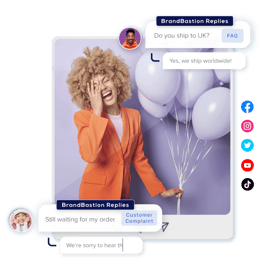
Social Customer Experience (CX) in 2023 — Statistics, Future Trends, and Reports
Today, it is not enough for brands to offer a good product or service. They must also create a memorable and satisfying customer experience across all platforms and touchpoints — including social media. Statistics show that brands that prioritize social customer experience (CX) can reap remarkable benefits. For example, actively responding to customer inquiries on social media can increase ROAS by +56%. In this blog post, we will delve into some more astonishing statistics, CX future trends, and real-life results of an improved customer experience on social media.
What is customer experience (CX)?
Before we dig into all the customer experience statistics, let us define what it means. Customer experience, or CX, is how customers experience their interactions with your brand — from the beginning to the end of their journey. In short, CX goes beyond product, price, and customer service and can be described as the summary of the overall experience of interacting with your brand.
Naturally, you want to ensure a smooth and positive experience throughout the whole customer journey. Therefore, it's essential to understand the experience at each touchpoint separately. One way to do this is to map the journey and understand needs, expectations, and potential pain points.
For example, a customer journey might start with seeing your ad on Instagram, then visiting your website, making a purchase, receiving the delivery, and requesting a refund or contacting customer support. To get a more in-depth understanding, you could ask yourself questions such as:
- Is the ad appealing and relevant?
- Is your website easy to navigate and informative?
- Does your product match the description and deliver value?
- Is the process of returning a product easy?
- Does your customer support team respond quickly and empathetically?
By considering and evaluating these aspects, you can gain insights into what it is like to be a customer.
What's the difference between customer experience, customer service, and customer care?
Customer experience, customer service, and customer care — are there any differences? In short, yes, there are. Additionally, it is crucial to understand what differentiates them since all areas must be worked with separately.
To clarify where the line draws, one can think of customer experience as the broad term. Customer Experience (CX) consists of both customer service and care, as well as aspects such as user experience and accessibility. You can analyze your brand’s customer experience by using social media listening and analyzing sentiments.
Customer service is more about monitoring and providing assistance through the company’s support team to resolve customers’ immediate questions or problems.
Customer care can be defined as the long-term process of building an emotional connection with your customers on a 1-on-1 level.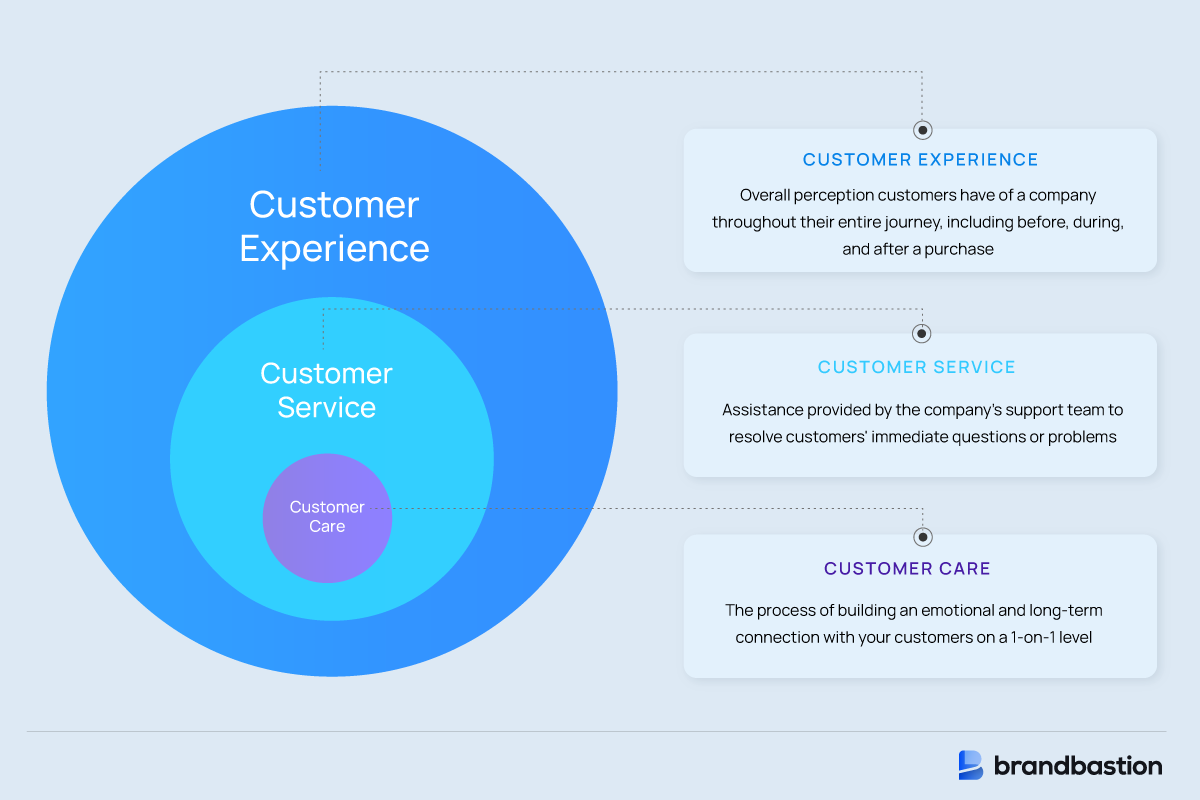
Customer experience in the era of social media
Today, many social media users visit brands' social profiles to explore new products, get inspiration, and read other customers' thoughts. However, that's not all. Social media has changed customers' expectations of possibilities to interact with brands. For instance, current and potential customers may expect as well to be able to ask questions about a product, make a purchase, and share feedback directly on social media platforms.
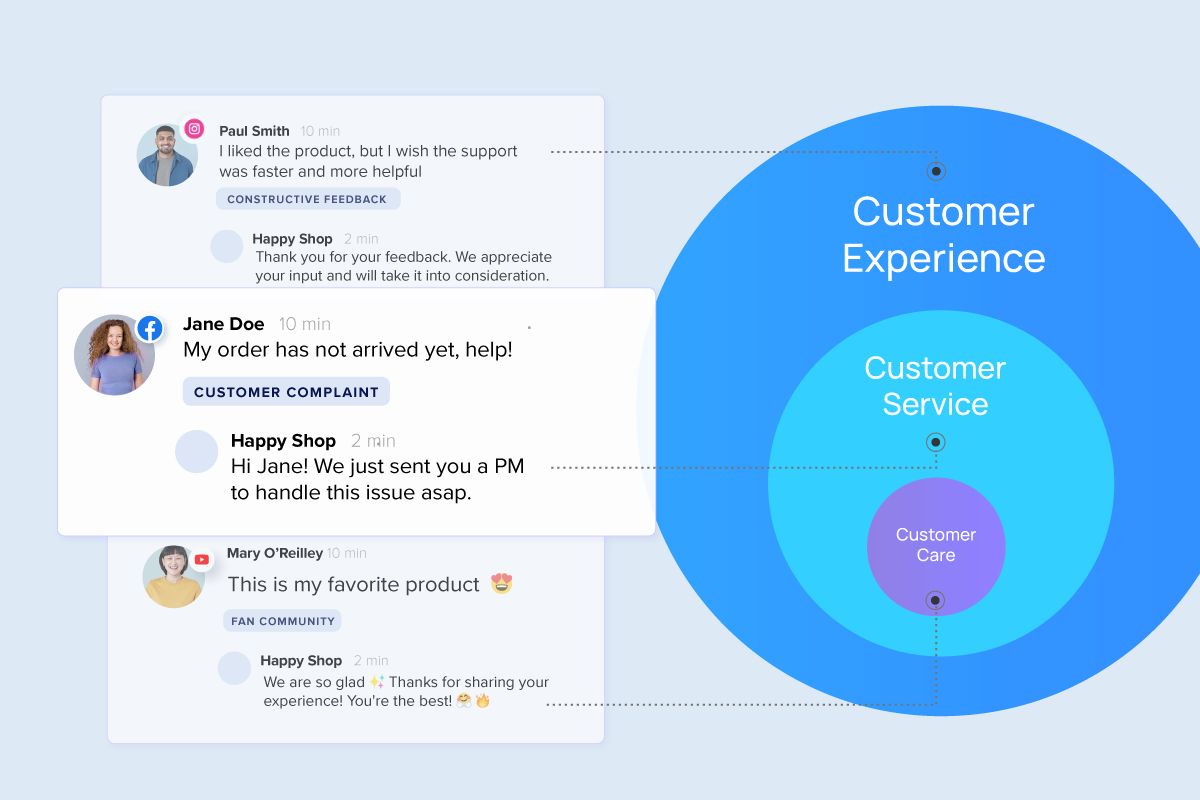
Additionally, people do not only expect that brands answer their questions and complaints on social media — they expect them to answer fast. According to Statista, 18% of globally surveyed expect an immediate response. Furthermore, 28% expect answers within an hour, and another 37% within the same day. Only 17% do not expect a response. The statistics suggest that the number of people who expect immediate responses to questions and complaints on social media is greater than those who expect no answer at all.
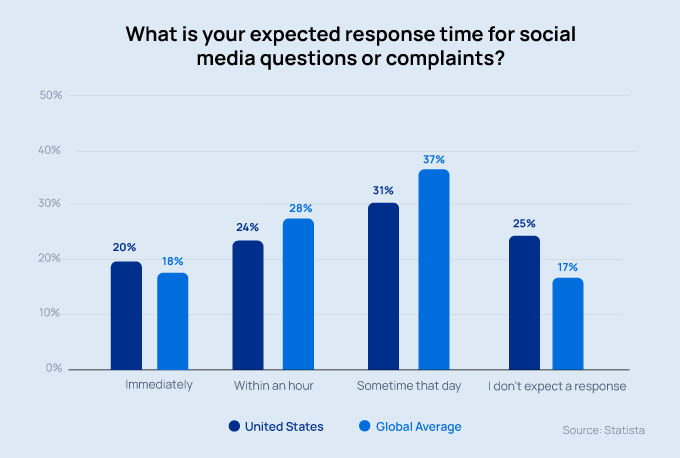
The effects of an improved customer experience on social media — 7 real-life examples with statistics that show stunning results
We have gathered statistics and real-life examples showing how improved customer experience on social media can positively impact your business. As you will notice, the statistics underline that a delightful customer experience does not only establish and build relationships but also grows your revenue.
- Actively responding to Customer Complaints, FAQs, Fan Community, and Product Interest comments on social media ads and organic posts can help increase ROAS by +56%.
- Replying to comments indicating purchase intent can lead to an 11% Conversion Rate.
- Replying to customer inquiries 24/7 on social media can drive a 49% increase in average purchase value.
- Replying to social media comments can lower the Cost Per Action by 26%.
- Actively responding to false claims and controversy on social media can help increase positive sentiment by up to 269%.
- Using 24/7 Alerts to identify ads that are not resonating with the audience can improve positive sentiment by +250%.
- Hiding harmful comments on social media and alerting when there's an urgent issue on ads and organic can help increase conversions by up to +34%.
You can find more information about each and every example, as well as more startling statistics under Customer Success Stories.
As the statistics and examples above demonstrate, improving customer experience on social media is not only a nice gesture but also a powerful way to boost your business performance. However, many brands are missing out on opportunities. One reason behind missed opportunities is that the average response rate for brands is only 7%*. To find out more about potential areas of improvement, you can continuously analyze and compare data and reports connected to your customers' experiences. Let us look into that right away.
*comments issued by the brand out of total user comments — BrandBastion Benchmarks
Keep track of your own CX statistics by continuously analyzing customer experience reports
It's crucial to stay updated with happenings in your social media channels to ensure your audience the best experience possible. One of the most accurate and effective ways to sort and analyze data is by implementing a tool that provides a good overview by giving detailed reports on aspects such as conversation topics, response time, sentiment, and engagement. From these overviews, you can then extract insight that will help you create a CX based on data. You won't have to do any guesswork or spend an endless amount of time manually sorting and analyzing each interaction.
Example of how to use reports on customer experience to leverage CX on social media
Suppose your customer experience report shows an increased negative sentiment compared to the previous month. When you look deeper into it, you identify that "order" is the most used word in comments tagged with a negative sentiment.
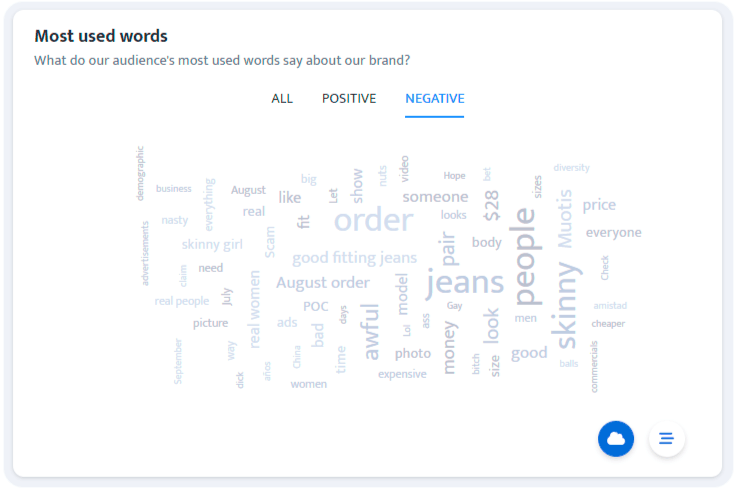
Example of a report you can access on the BrandBastion platform
You can further identify where the problem comes from by taking a look at the comments that include this word. For example, if you have given an estimation of when an order will be received, customers expect to have it delivered within that period. So, naturally, if the order is not delivered in time, there's a high risk that people will feel frustrated.
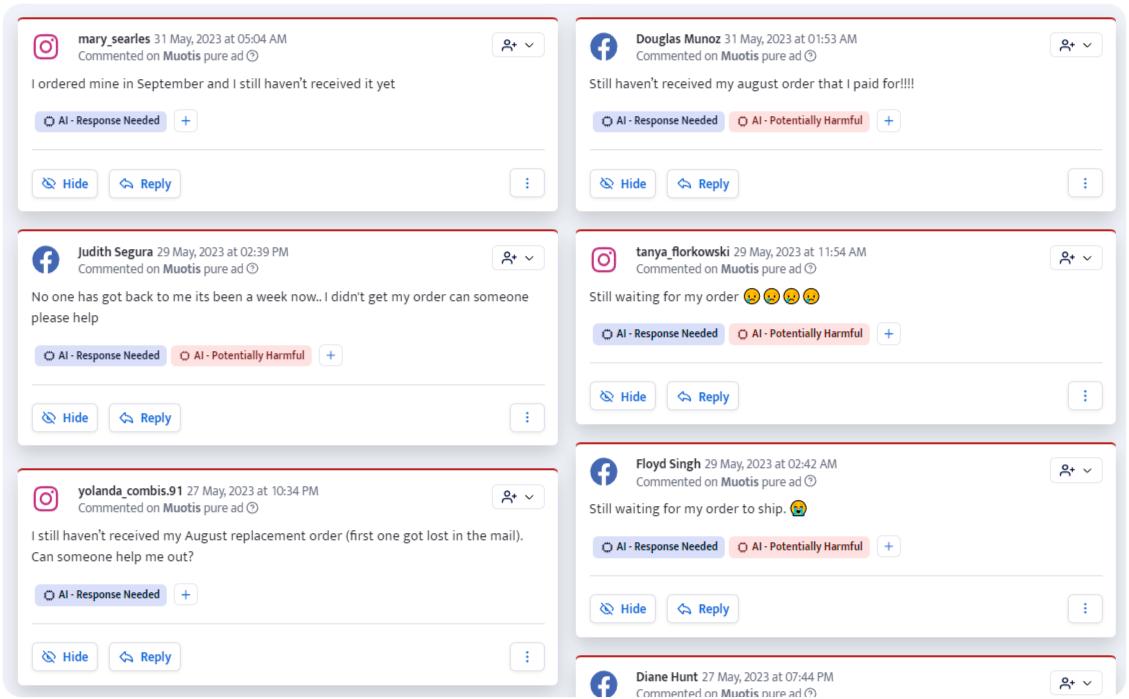
With insights from your customer experience reports, you can efficiently identify the root of the problem. In this case, many aspects can affect the delivery time. There can be internal factors (shortage of staff, products out of stock, etc.) as well as external factors (problems with external delivery companies or suppliers, etc.). To minimize frustration in the future, you can predict when there's a risk of delayed orders. Furthermore, you can set up a plan for communicating or compensating for any inconvenience the delays might cause your buyers.
The future of customer experience is already here
Customer experience is about having a proactive approach — you want to stay at the forefront of things to adapt to the constantly changing landscape of customer expectations.
AI — the future of customer experience, service, and care
AI can reduce manual, tedious, and repetitive tasks. For instance, different AI models can help you analyze and categorize customer data, predict behavior, and provide personalized recommendations. AI can also enhance your customer service by classifying high-priority requests (such as critical and escalated customer complaints) so you can prioritize those interactions and avoid damaging customer experience further.
Personalization and empathy — understand your customers on a deeper level
The future is about building customer relationships based on trust, transparency, and emotional connection. Personalization is the process of tailoring products, services, or experiences to the individual needs and preferences of each individual. Empathy and analyzing sentiment are the keys to successful personalization. It allows businesses to anticipate and meet the expectations of their target audience based on their specific preferences.
Digital agility — excellent customer experience across platforms
One of the most vital trends in customer experience is meeting your customers where they are. Digital agility means adapting digital technologies and capabilities to meet needs, preferences, behaviors, and feedback effectively. It also means you can optimize your internal processes and systems with digital tools and technologies to automate, streamline, and integrate your workflows, data, and procedures. Many have found it effective to set up seamless interactions between platforms.
Conclusion
In conclusion, social CX is brimming with opportunities for brands to thrive and leave a lasting impression on their audience. By prioritizing and continuously analyzing the customer experience on your social media, you have the potential to deepen relationships with your audience, as well as grow revenue and reach business objectives.
If want to boost CX on your social media at scale, you can try our BrandBastion’s Fully Managed Services. BrandBastion Care is our fully managed solution to reply to customer comments on your brand’s behalf 24/7 at scale. We use AI to analyze and label each conversation with a category (e.g., customer complaint, fan community, etc.) to ensure consistency when replying to conversations.
It enables you to monitor and manage your social media conversations across platforms. At the same time, you’ll get valuable statistics and insights that help you make data-driven decisions. Put simply; it’s an efficient way to build a world-class customer experience for the future. Read more and get in touch with us to learn how our solution can help your business.
